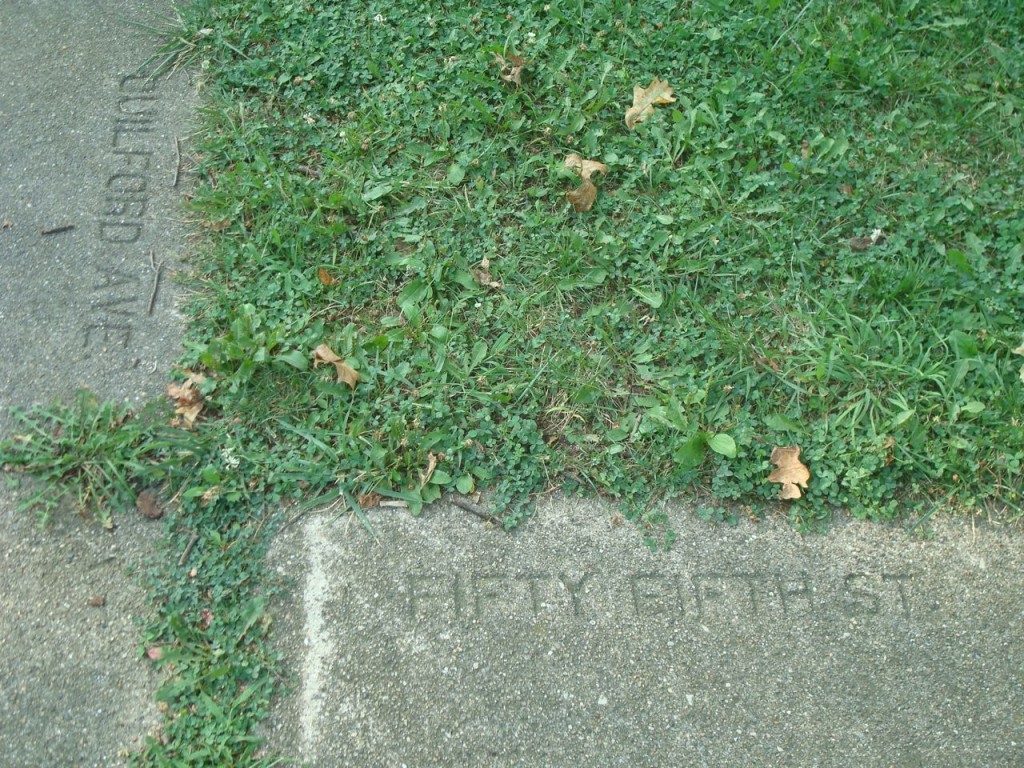I thought I would kick off the new blog by asking a simple question: What makes a residential neighborhood street a pleasant place for a walk? I’m featuring some examples from around my neighborhood, but these features exist all around the city.
Sidewalks that are separated from the street by a grassy or tree-lined median provide a feeling of comfort for the pedestrian. The tree canopy has the additional benefit of providing shade in the summer, and protection from the wind in winter. The street is relatively narrow, and cars are parked along the street, which has the affect of slowing down vehicles. Usually, one car will have to pull over to let the car moving the opposite direction drive past.
Another important detail is the design and placement of the houses. Residences that are fronted by a garage are a rarity in the traditional neighborhood. Instead, there is usually a front porch that helps provide a feeling of community. The lots are relatively small, and the houses are near the sidewalk.
This is a typical scene for a pedestrian in an Indianapolis neighborhood:
Occasionally, there are interesting historic details that can go unnoticed at first glance. Often in my neighborhood the original granite curb is still intact. Another historic remnant can be a strip of original brickwork on the street itself. This corner is lucky to retain both of these:
Notice in the above photo that there is a section of concrete curb among the granite, as the last repair neglected to replicate the detail. I can imagine the granite curbs will continue to slowly vanish.
Moving on, my personal favorite details are the slowly fading street names embedded into the sidewalk. I love when there is a slight dusting of snow, which help give the stamps some definition. This one is still in pretty decent shape, however.
This blog has posted often about the need for a complete sidewalk network in this city, and that is certainly a cause I will continue to champion. However, it is often these subtle details that can turn a simple stretch of concrete into a community asset. A proper street design provides a place where people actually want to walk, instead of a neighborhood mandated appendage that is only used for exercise.
Giving people the option of a useful walk is also important. If the store around the corner doesn’t have the greatest amount of parking, it won’t matter much to you; you live around the corner and you can walk there. Active neighborhood nodes should be a point of emphasis for any city redevelopment plans.
Neighborhoods such as this are a fine example that developers in the 1920’s knew how to create a memorable place that residents could take pride in for decades to come. It has been done before, and it can be done again. We are not reinventing the wheel by striving for a sustainable Indianapolis. We can look to the past to see what has worked, and then we can apply the necessary modern touches and design. Our city deserves no less.



For me, it’s all about trees (being fair-skinned) and destinations. I love your point about having a “useful walk”. One of the other most essential aspects is having neighbors who walk. In my “transitional” neighborhood, there are far fewer regular walkers than in other areas of Meridian Kessler or Irvington. I’m not sure if that’s about perceptions of safety, a lack of nearby destinations or proximity to the Monon (which may redirect some neighborhood traffic away from our sidewalks). It’s changed a bit in the time I’ve lived there, for the better, but I’m pretty sure that if more people walked, more other people would walk.
I think you’ve pretty much nailed it…thank you.
Part of a good neighborhood is having those sidewalks to walk on!
If this water deal ends up going through and the city gets money to upgrade infrastructure, it would be nice to see some of our neighborhoods without sidewalks get some. Instead of upgrading miles of largely motor dominated streets (like Michigan Road, Allionsville Rd, etc) get them. Not that I am against ANY street getting sidewalks; I am happy to see it happen. I just cringe when I see streets that are typically fast throughways getting sidewalks. Neighborhoods, where people actually live, are getting past over when new sidewalks are actually built these days for places like that
In order to make places like Michigan and Allisonville walkable, they’d need to pretty much redesign the entire street. They absolutely need sidewalks, because they have bus service…but as you say, there are entire neighborhoods that could be more walkable if they were to simply add a sidewalk.
I just moved & am happy to find I do have those walkable sidewalks, the kind you can walk your children on & feel they are far enough from the road that they will not be mulled by speeding cars. On my way home from work (Illinois st), too many parents have to walk their children in the road to safely get to their vehicles after school. Sorry off the subject, but what happened to school parking lots?